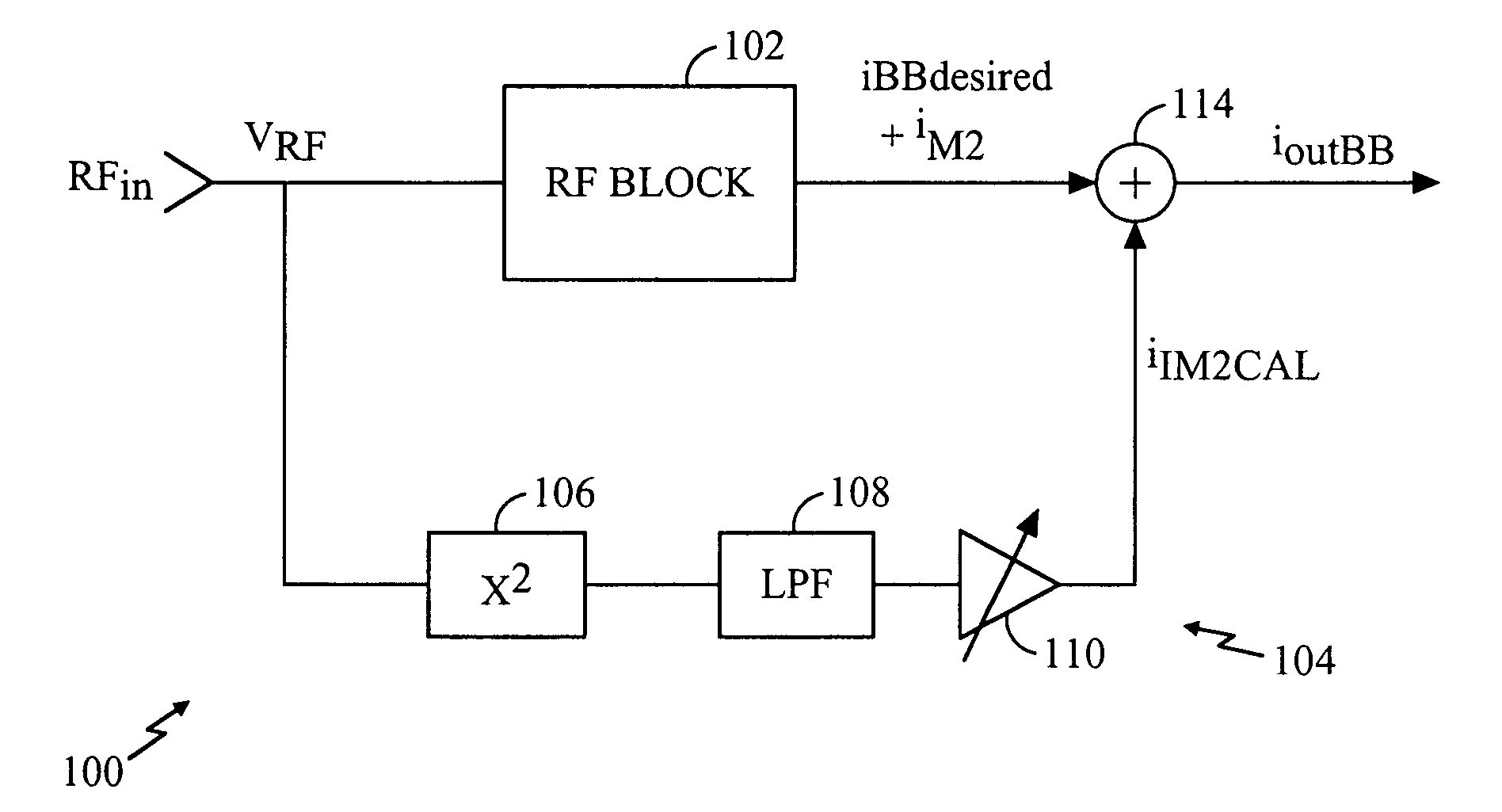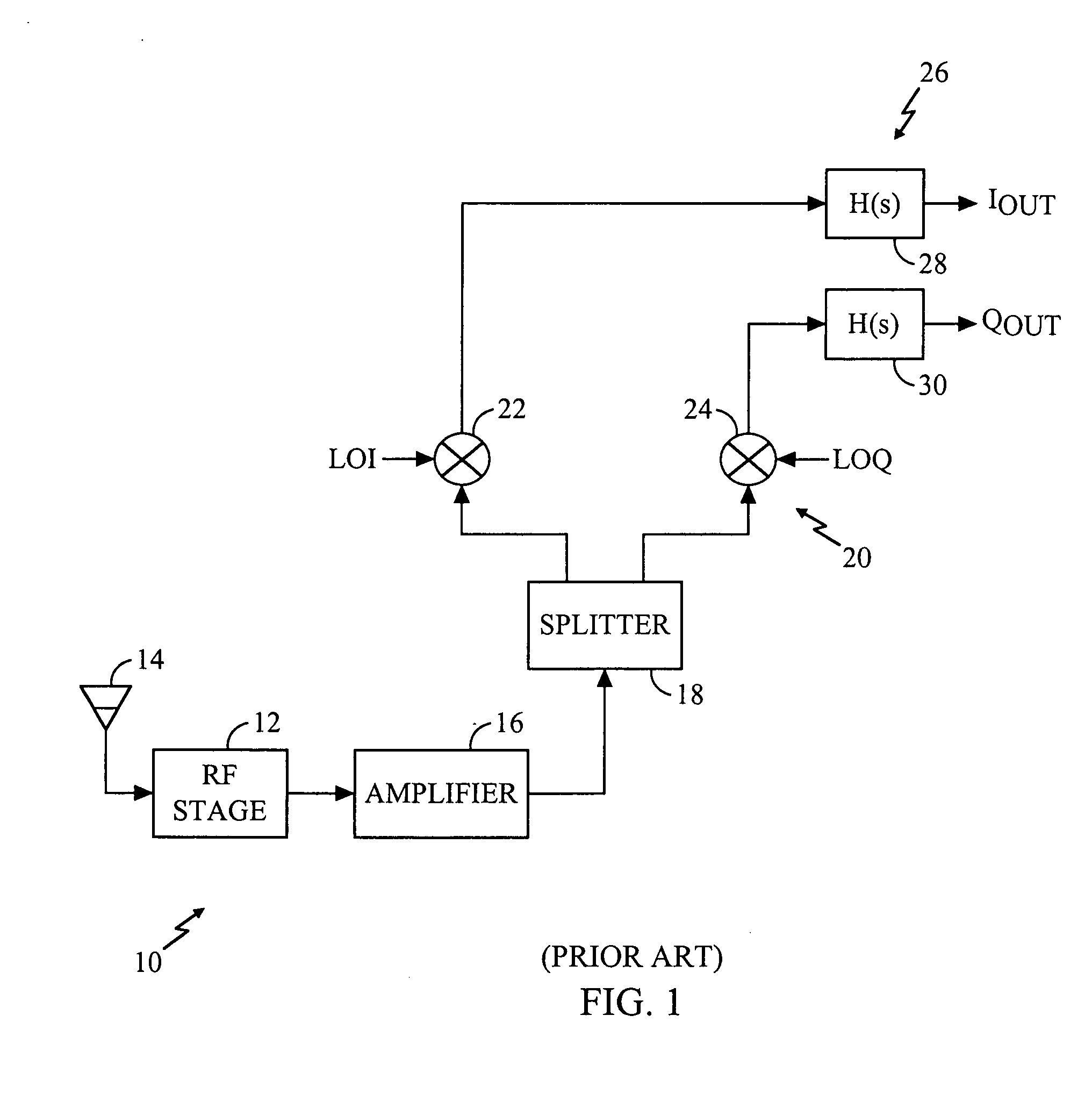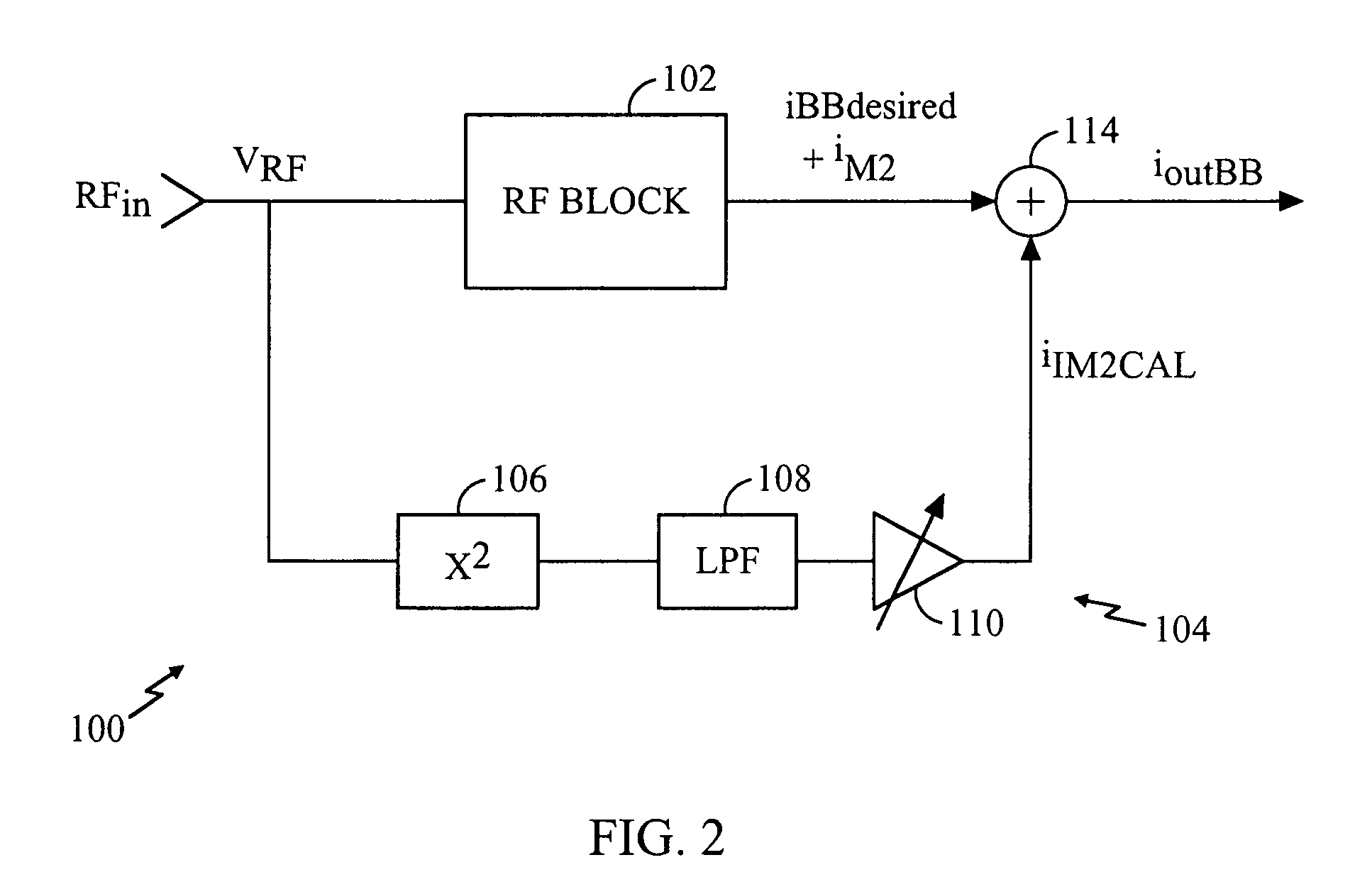Distortion reduction calibration
a calibration circuit and reduction technology, applied in the direction of receiver monitoring, transmission monitoring, instruments, etc., can solve the problems of increasing interference between wireless communication systems, interference with desired signals, and possible interference, so as to reduce the second order nonlinear response of the receiver output signal.
- Summary
- Abstract
- Description
- Claims
- Application Information
AI Technical Summary
Benefits of technology
Problems solved by technology
Method used
Image
Examples
Embodiment Construction
[0030] The present invention is directed to a calibration circuit and method that simplifies the calibration process for individual wireless communication devices. The term “wireless communication device” includes, but is not limited to, cellular telephones, personal communication system (PCS) devices, radio telephones, mobile units, base stations, satellite receivers and the like. In one embodiment, the calibration circuit is used at assembly to compensate for variations in components. In an alternative embodiment, also described herein, an onboard calibration circuit can be used to compensate for component mismatch due to circuit aging or other changes in circuit operational parameters.
[0031] IIP2 performance presents a major challenge in direct conversion down-converters. The required values of IIP2 are usually very high and the actual performance tends to be difficult to predict because it is almost exclusively determined by statistical phenomena. That is, component mismatch te...
PUM
 Login to View More
Login to View More Abstract
Description
Claims
Application Information
 Login to View More
Login to View More - R&D
- Intellectual Property
- Life Sciences
- Materials
- Tech Scout
- Unparalleled Data Quality
- Higher Quality Content
- 60% Fewer Hallucinations
Browse by: Latest US Patents, China's latest patents, Technical Efficacy Thesaurus, Application Domain, Technology Topic, Popular Technical Reports.
© 2025 PatSnap. All rights reserved.Legal|Privacy policy|Modern Slavery Act Transparency Statement|Sitemap|About US| Contact US: help@patsnap.com



